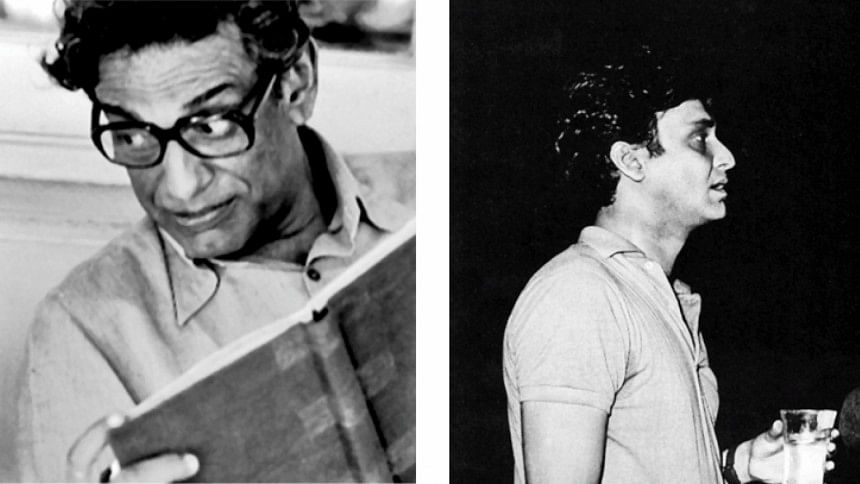Ray and His Comrades

Photos: courtesy
Throughout a career span of 3 and half decades, the distinguished Bengali director Satyajit Ray created over 30 films, revolutionising Indian cinema and introducing the nation on screen to the audiences worldwide. For prominent author Salman Rushdie, Satyajit Ray was “the poet par excellence of the human-scale, life-sized comedy and tragedy of ordinary men and women”. Akira Kurosawa believed that “not to have seen the cinema of Satyajit Ray means existing in the world without seeing the sun or the moon.”
Ray's cinema's can clearly project the grasp he had over the whole production. Even if we see Pather Panchali, which was Ray's first movie; his control over the script, cinematography and even lighting can still be recognised.
Ray had clear ideas as to what almost every character, certainly the main ones, ought to look like in his films. During his early period, he visualised the faces of main characters in sketches before making a film. In his later films he usually turned to actors he had already worked with before. In short, Ray was very clear as to what kind of faces he wanted for particular roles.
Subir Banaerjee, who was cast as Apu in Pather Panchali, can be a good example of how Ray transformed a non-actor to a classic character of world cinema. In an interview, Subir once said, “My role in that film was like a painter's brush, and kakababu (Satyajit Ray) was the painter.” Subir Banerjee lived right across Ray's house and Ray's wife, Bijoya, was the one who first saw the 'Apu' in Subir.
Another one of Ray's discovery was Chunibala Devi, who played the old aunt in Pather Panchali. After an extensive search and trying quite a few older actresses, Ray found the octogenarian Chunibala, an all but forgotten stage actress from the 1920s. Swatilekha Sengupta wrote a letter after her final exam to Satyajit Ray telling him that she wanted to be a part of his film. After eighteen years, she was cast as Bimala in Ghore Baire.

Satyajit Ray gave a lot of aspiring actors and non-actors their first break in cinema. Sometimes, Ray would approach someone he saw on the road, by chance, that he thought fit for the character he had in mind. Through this process, an employee of the Sandesh magazine named Tapeen Chatterjee became Gupi Gayen of the famous Ray film Gupi Gayen Bagha Bayen. “I never saw Manik da (Satyajit Ray) take a break from shooting, even when we weren't shooting. He was very much into details and that detail used to always pay off in next shoot.” Another aspect of Ray, according to Tapeen Chatterjee was that he influenced the whole crew to be one with the film. “I used to transform completely when I wore that dhuti and kurta, I never once thought of myself as Tapeen on set, the very ambience changed me to Gupi completely.”
Whenever there's talk about Satyajit Ray's actors, one name that outstands all is Soumitra Chaterjee. After his debut in Apur Sansar, Ray's protégé became one of Bengal's most eminent actors. Soumitra's first encounter with Satyajit was when he tried to audition for the character Apu in Aporajito. Though Soumitra wasn't selected for the role, he kept in touch with Ray, and Ray also had him in mind for another character. Ray's proposal to Soumitra for the role Apu in Apu'r Sansar is quite a legendary tale in the industry.
“I went to one of his shoots, where after a while he asked me if I was acquainted with the famous actor Chhabi Biswas.” Ray took Soumitra to Chhabi Biswas and said, “This is Soumitra Chaterjee, he is the next Apu of my film Apur Sansar.” This was the first time Soumitra heard the news himself. “While we were on the train, Manik Da (Satyajit Ray) and I had a conversation about films that lasted all night. When I look back, I feel like I learned more in that one night, than I ever did in my whole career,” says Soumitra about Ray's influence on him.
Satyajit Ray created his own pathway which still guides the industry to this day. No other director understood their actors like he did, and his influence is still prominent in every aspect of today's cinema.
All the quotes have been taken from the book 'Satyajiter Chabite Pratham Abhinoy' compiled by Ajay Misra.

 For all latest news, follow The Daily Star's Google News channel.
For all latest news, follow The Daily Star's Google News channel. 



Comments